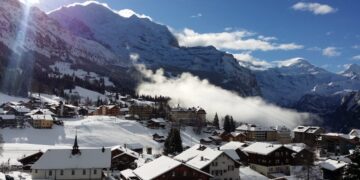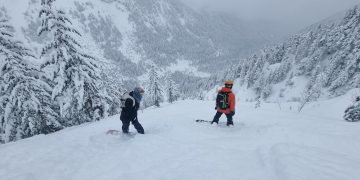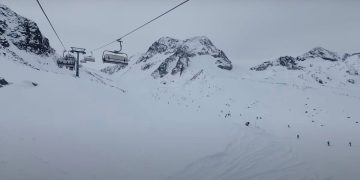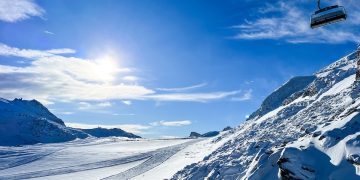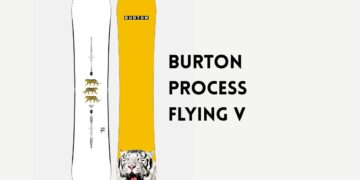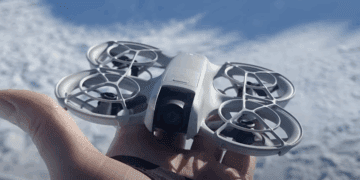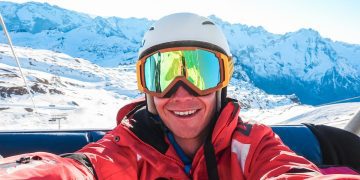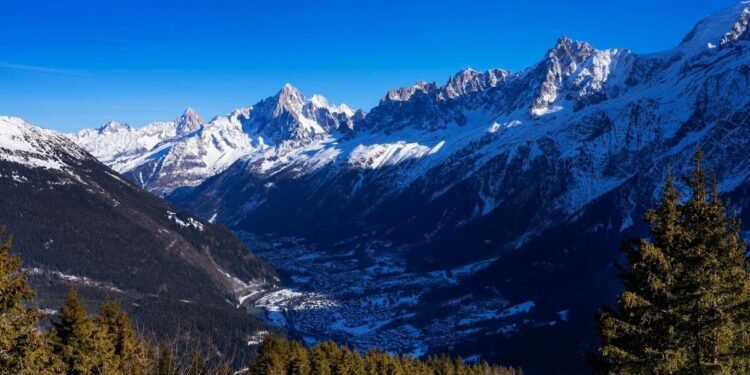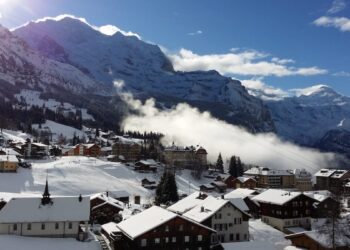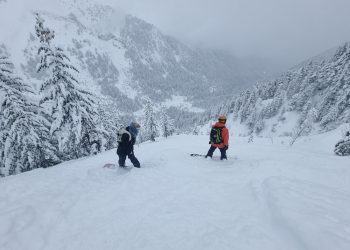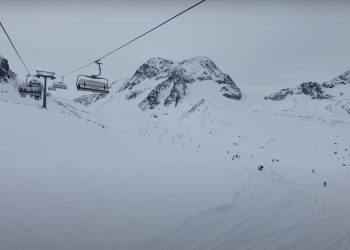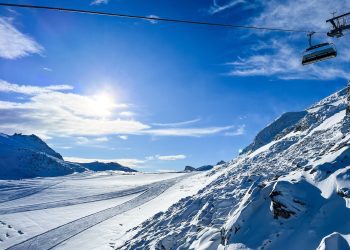Perhaps one of the best known ski resorts in the world, Chamonix is probably on the must ski lists of anyone serious about their winter sports. And with good reason. In the shadow of the mighty Mont Blanc, Europe’s tallest peak, as well as access to some of the most iconic ski runs in the world, there is a lot to tick off the bucket list if you head to Chamonix.
As a result of our most recent visit to the famous French ski resort, in March 2024, we’ve put this Chamonix review together to help you understand a few things about a trip here.
Is Chamonix worth visiting for serious skiers and snowboarders? Is there much for beginners or families? Or should you skip Chamonix and go somewhere else?
Before we get stuck in a quick note. This review of Chamonix does contain some affiliate links, which just means we may earn a commission if you click and buy anything via them. OK, let’s get stuck in…
Chamonix: Essential stats
- Where: Haute Savoie, France
- Resort altitude: 1050 metres
- Ski area total piste length: 170 kms
- Ski area max height: 3,840 metres
- Closest airport: Geneva (GVA)
Located just 1 and a half hours from Geneva airport by transfer bus, Chamonix is perhaps one of the easiest ski resorts to access in the Alps. And while that certainly makes it an appealing ski resort for many, the main draw is the fact that this is a prestigious ski location, with some of the most incredible views and most iconic peaks.
Book your Geneva Airport Transfer here.
One thing to bear in mind though is that Chamonix ski resort is not actually a ski resort in the sense that many other ski towns are. In fact, Chamonix is a large town which sprawls along the valley at around 1000 metres above sea level.
From the town of Chamonix, you can access several excellent ski areas including:
- Brévent/Flégère
- Grand Montets/Argentiere
- Vallorcine-La Tour
- Aiguille du Midi
- Les Houches
- Les Planards
Of these, the ski areas from town are Brevent, with the main gondola leaving from just above the town centre, and Aiguille du Midi gondola leaving from the town.
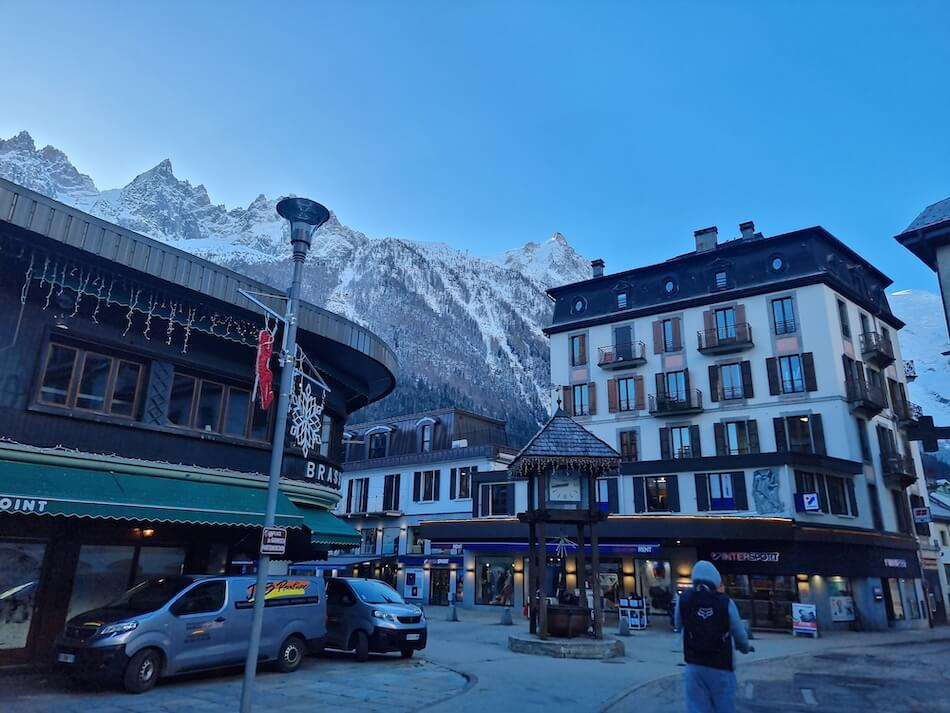
You also have access to the Les Planards learner area in town, and then a ski bus linking you to all of the ski areas along the valley for free. We’ll look in more detail at each section in just a moment. First a few basics…
How to get to Chamonix
Chamonix is well linked from Geneva airport, with regular bus services linking the town from the airport terminal. We caught the Flixbus service which cost around €17 per person each way, and was very efficient. The bus was packed when we visited, so clearly it’s worth booking in advance.
The bus journey time from Geneva Airport was around 1 hour 30, although it would obviously be quicker by private transfer.
There are various other bus companies serving the route, and there are also options for private transfers from Geneva Airport.
Search for bus tickets to Chamonix with BusBud.
If driving, Chamonix is on the main road A40/N205 linking Annecy and Geneva to Italy and the Aosta Valley. The Mont Blanc tunnel is also here, going to the neighbouring ski resort of Courmayeur in Italy – although not as well connected as you might expect.
There is a train line into Chamonix, leading all the way to Vallorcine. However this is a branch line, which is connected from the station at St Gervais les Bains le Fayet. This station is just outside the town of Salanches, which also services the ski resorts of Le Grand Massif and Megeve.
Generally speaking if you’re coming from one of the big towns by train/TGV, you’ll need to change most likely twice. From Geneva, this means a train to Annemasse, changing to the St Gervais train and the changing to the Chamonix train. For people coming from Paris, London or any other major city, you’ll also need to change to connect onto the Chamonix line.
Read also: Which ski resorts are close to Geneva?
What are the ski areas in Chamonix?
Because Chamonix isn’t a ski resort as such, more a major town which links to several ski areas, there is a choice of places to ski. And depending whether you’ve picked up a Chamonix Le Pass, or a Mont Blanc Unlimited pass, you may or may not have access to everything.
Looking at each area, we’ll start with those covered by the Chamonix Le Pass:
Brévent/Flégère
This is the largest and most accessible ski resort close to the main town centre of Chamonix, with around 56 kms of ski runs between them. The ski bus drops you at the Brevent gondola which then whisks you up onto the mountain in under ten minutes. From here, you have south facing views across to the stunning Aiguille du Midi and Mont Blanc.
Brévent is also linked to the neighbouring ski resort of Flégère by another gondola, hence the conjoined name. Brévent is also where you’ll find the iconic Charles Bozon black run from the top of Le Brevent peak.
The Flégère gondola is located in the small village of La Praz, which is around ten minutes by bus from centre of Chamonix. It’s a simple process to get the bus to or from both of these gondola stations using the ski bus.
Both Brévent and Flégère are primarily geared towards intermediates, with both featuring small learner areas and green slopes.
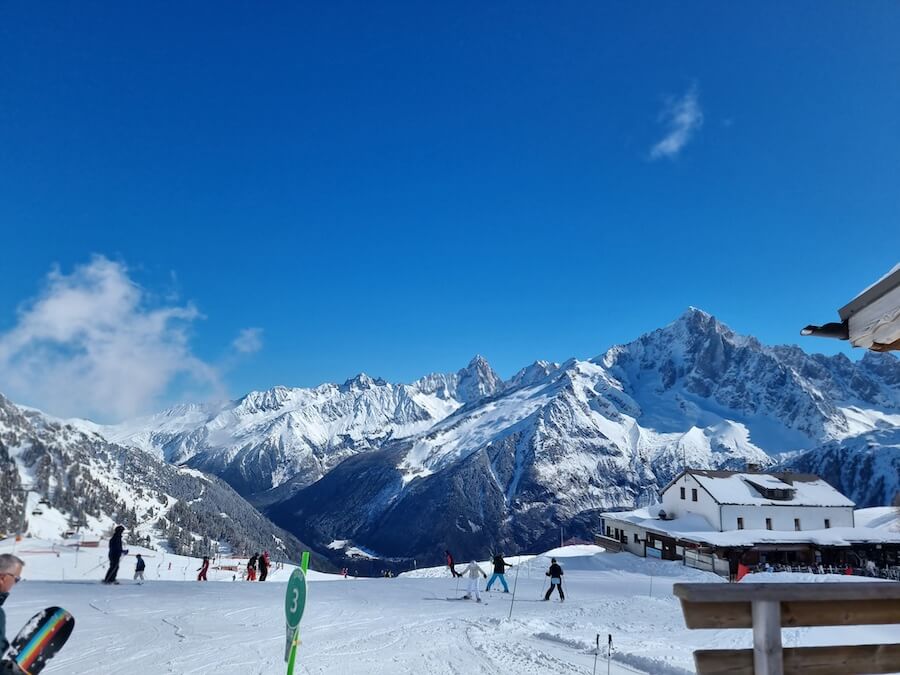
La Tour/Vallorcine
At the head of the valley, around a 30-40 mins bus ride, is the Vallorcine ski area. The ski resort here sits literally against the Swiss border, and is best suited to those seeking sedate and cruisey runs. One thing to bear in mind for snowboarders is that this ski area is mostly served by T-bar and button lifts, although there are some chairlifts serving the main runs.
Again, there is a good learner area here too – and on a good day this could be arguably the best place to ride in the whole Chamonix valley.
Grand Montets/Argentiere
The village of Argentiere is where you’ll find the Grand Montets gondola, and also one of the most challenging ski areas in the Chamonix valley – excluding the Aiguille du Midi. The terrain here is heavily geared towards the more experienced skier and snowboarder, with plenty of freeriding across red and black pistes over 29 kms. Yes, the pisted area sounds kinda limited, but you’re mostly here for the freeriding to be honest. On a powder day this is where all the serious ski and snowboard bods head, and the powder freeriding can get tracked out quick.
There is a small learner area here, but you’d be better served in one of the other ski resorts such as Les Houches or Vallorcine-Le Tour.
Les Planards
This small learner ski area in the town of Chamonix offers under 2 kms of pistes, but is perfect for families and learners. There are several t-bar and button lifts at the bottom of the resort, and a chairlift taking you up onto a blue and red run back down the hill.
When we visited with my learner friend to get his first steps on the snow, we literally just walked in and didn’t need to use the lifts. And while there are a lot of kids and families, this can be a useful spot to get the first runs in or simply practice the basics.
For experienced riders, the main reason to visit Les Planards would be the night skiing, which takes place during the holiday weeks and only if the snow cover is sufficient. When we visited in March 2024, the snow cover was a little patchy.
One of the main appeals of Les Planards is that it is also a kinda amusement park, with lots for kids to do. There are several ski schools, a toboggan run, some nursery areas, a train ride and fun fair area – so it’s very much geared up for kids.
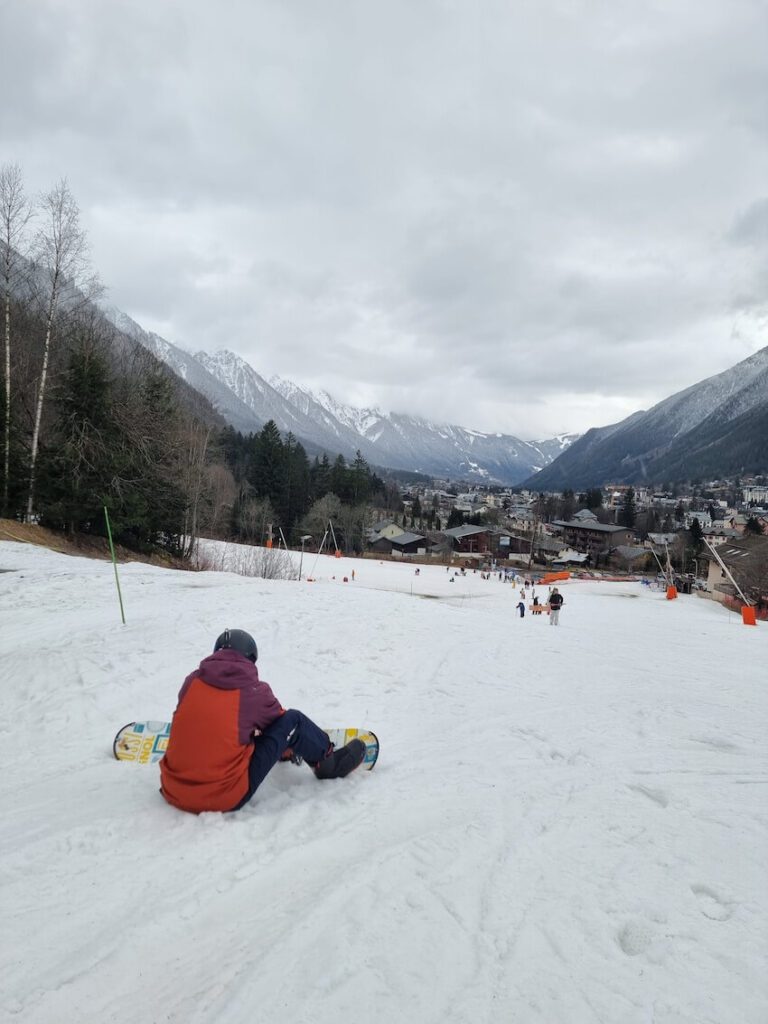
The following ski areas are included in the Mont Blanc Unlimited pass, but can also be bought as individual passes for specific days or longer duration.
Aiguille du Midi
This is the headliner, with the world’s longest ski run at around 20 kms top to bottom. However, this is not a pisted run and is not suitable for inexperienced riders. It’s also highly recommended to use a guide, as you’re riding real mountain terrain here, not a groomed ski area.
That said, if you want to ride one of the best pieces of terrain from a ski resort anywhere in the world, Aiguille du Midi is probably high on your to-do list.
The gondola drops you just below the Aiguille du Midi peak, and is as close as you can get to Mont Blanc on a pair of skis or a snowboard. You will also need to ride the gondola down at the end of the run as there is no return to resort trail.
Les Houches
This ski resort in the village of Saint Gervais is a good mix of beginner and intermediate trails, with one of the most iconic runs in the Chamonix valley. The Kandahar run is an epic black trail that is used in the FIS world cup, winding through tree lined terrain down to the village base.
Much of the terrain in Les Houches is ideal for beginners and intermediates, but don’t let that scare you off if you’re looking for some challenging runs. There are some great little lines to pick out, although the lower altitude of this ski area means that the lower portion of the hill can be closed off if snow cover isn’t sufficient.
When I visited, there was sparse snow cover on the bottom of the mountain, meaning only the top was open to riders. But it was very much worth the trip…
Read our full Les Houches review.
Megeve
A huge ski resort in it’s own right, with 270 kms of pistes, Megeve is definitely worth a visit. While the lower altitude means a little less snow sure, with the highest point at 2350 metres, there is lots to explore here. If you’re with family or beginners then Megeve might be your preferred choice for a ski holiday, exclusive of the Chamonix pass.
But, if you’re here for a week or more, and you want to get your money’s worth then you can access Megeve with your Mont Blanc Unlimited Pass.
Do you need Chamonix Le Pass vs Mont Blanc Unlimited?
When it comes to buying the ski pass for Chamonix, you’re presented with two clear options. Chamonix Le Pass and the Mont Blanc Unlimited.
With Chamonix Le Pass, you get access to the main ski areas in town, excluding the Aiguille du Midi.
With Mont Blanc Unlimited, you get all of the above, plus access to Les Houches, Courmayeur in Italy and even a day in Verbier and Crans Montana in Switzerland.
(Check our our Crans Montana review and our Verbier review)
If you’re in Chamomix to ski or snowboard for a week or so, you’ll probably find the Chamonix Le Pass will be all you need. Two days each at the main ski areas will mean you’ll have covered them all in sufficient detail. Especially if you’re just here for some cruising and apres, or as a beginner/intermediate.
I personally think most people will be fine with the Le Pass option. If you want to ride Les Houches, which is the cheaper lift pass, buy the specific days you want instead of paying the extra for the Unlimited Pass.
But if you’re here to tick some major ski experiences off your list, including the Aiguille du Midi, or maybe even get a day or two in Verbier, then pick up the Mont Blanc Unlimited.
What is skiing and snowboarding in Chamonix like?
Generally speaking, the ski terrain in Chamonix is mostly suited to intermediates. Brévent-Flégère and Grand Montets in particular are mostly red runs, but that being said, there is enough here for advanced beginners to get stuck into.
There are some nice pockets of freeriding potential here, and I hear that La Tour/Vallorcine has some excellent freeriding and a good snowpark too.
As a snowboarder, I thought the terrain was fun, fast and varied enough to be able to take a different line each run, even on the same pistes. This is especially true for the Brévent-Flégère area.
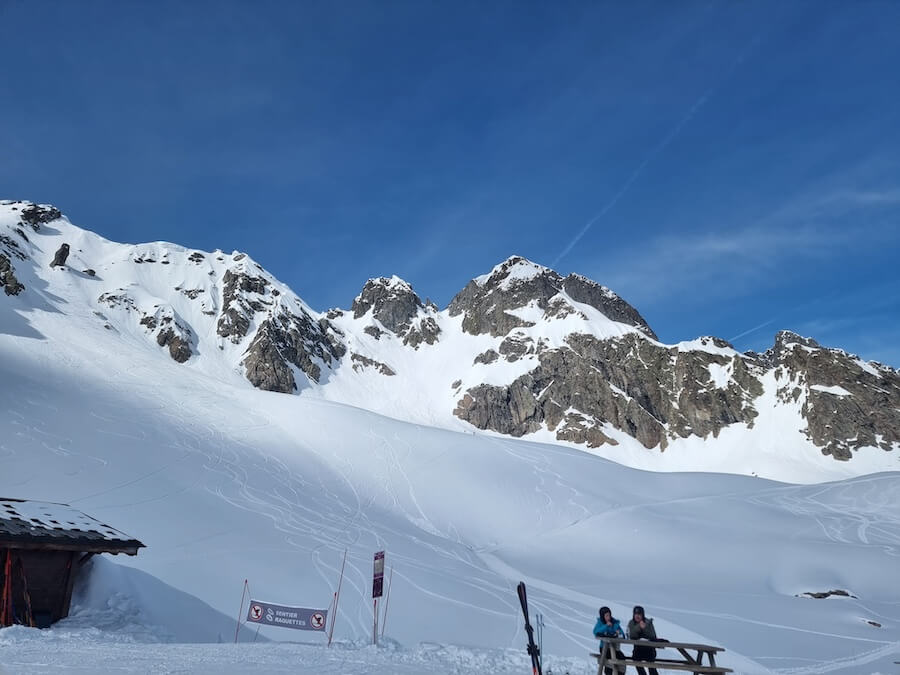
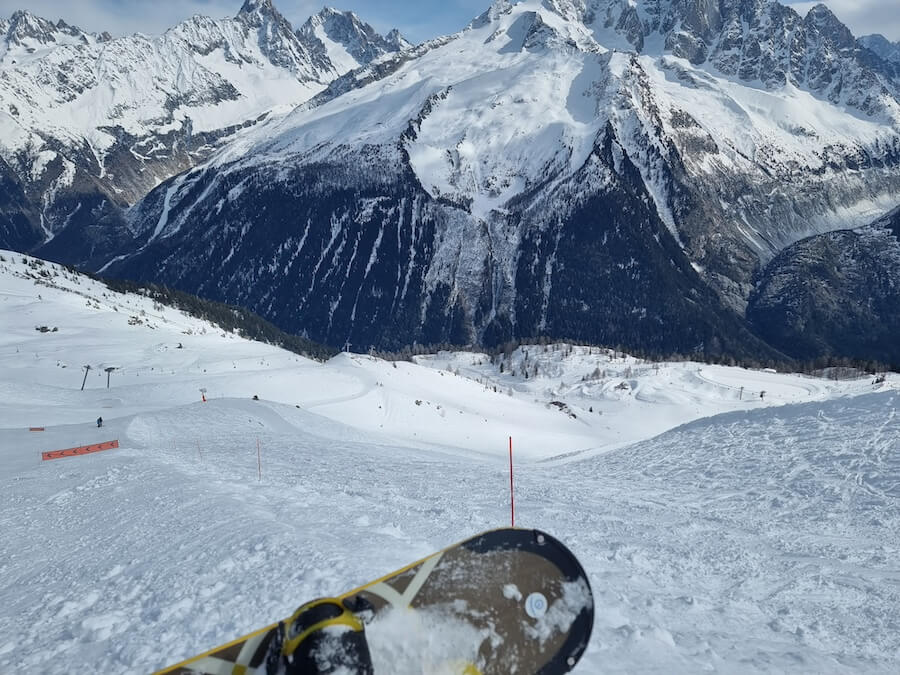
Les Houches I found to be a little flat in places, which could be frustrating as you often needed to unclip to skate across a long flat. But even there, there was ample opportunity for some sneaky freeriding between trees and some hidden trails.
One thing I think is worth noting though is that Chamonix is busy. Like, really busy. We were here during a French holiday week, which probably contributed to the influx. Queues to get onto the main chairlifts were more than I’ve seen at pretty much any other European ski resort, and due to the nature of some of the Chamonix ski areas, there tends to be a focal chairlift for the whole mountain.
But we actually found that the most common accents on the slopes and in the lift lines weren’t French or Brits, but North Americans.
Almost every chairlift or gondola I was on there was an American. This is apparently because the Ikon Pass includes Chamonix-Mont Blanc, meaning that more Americans are getting their value by popping across the pond. I didn’t think this was a negative, per se, but it perhaps contributed to the sense of congestion in some places, and there were a few culture clashes. The European lift etiquette vs North American is a whole other subject for another article.
Read: Why are so many Americans skiing in Europe?
However, the international crowd in Chamonix extends beyond North America. We also met Taiwanese, young Qataris, Brazilians and a variety of the usual European visitors. Obviously the appeal of skiing in Chamonix is international.
In addition to the congestion, I found that most of the ski runs in Chamonix were quite short compared to some of the other resorts I’ve ridden recently. While there are a few lengthy descents, I found that I’d spent more of my time on the chairlift than on the run. Combined with those lift queues, it contributed to a sense that I would probably not prioritise a return to Chamonix for snowboarding again any time soon.
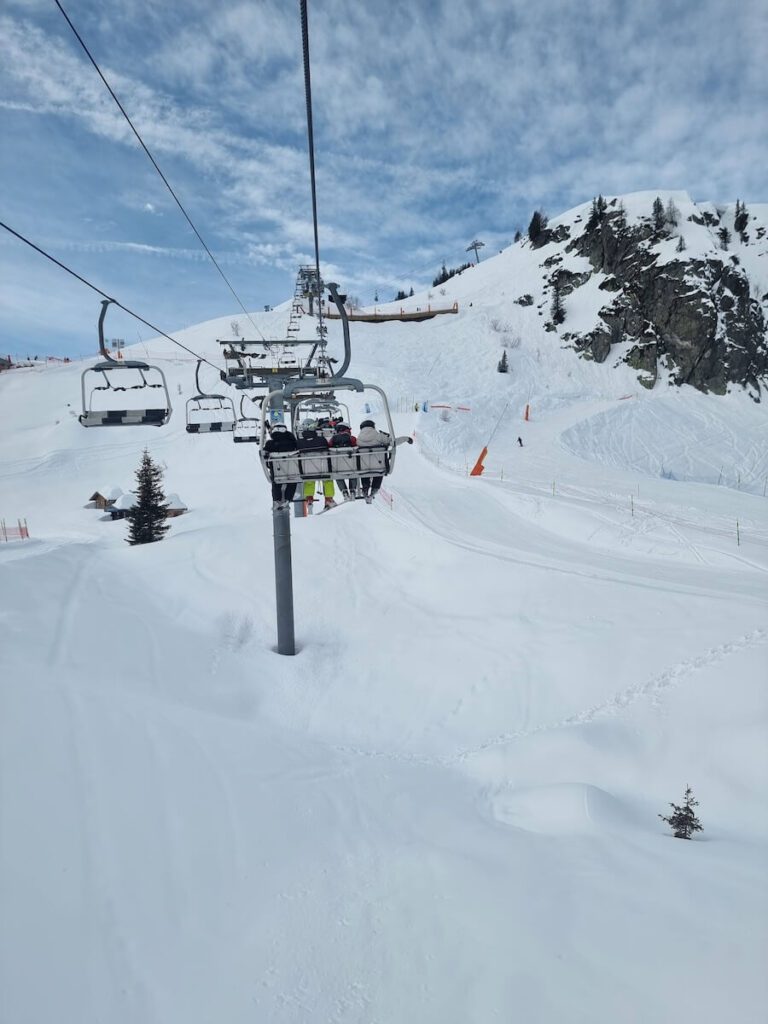
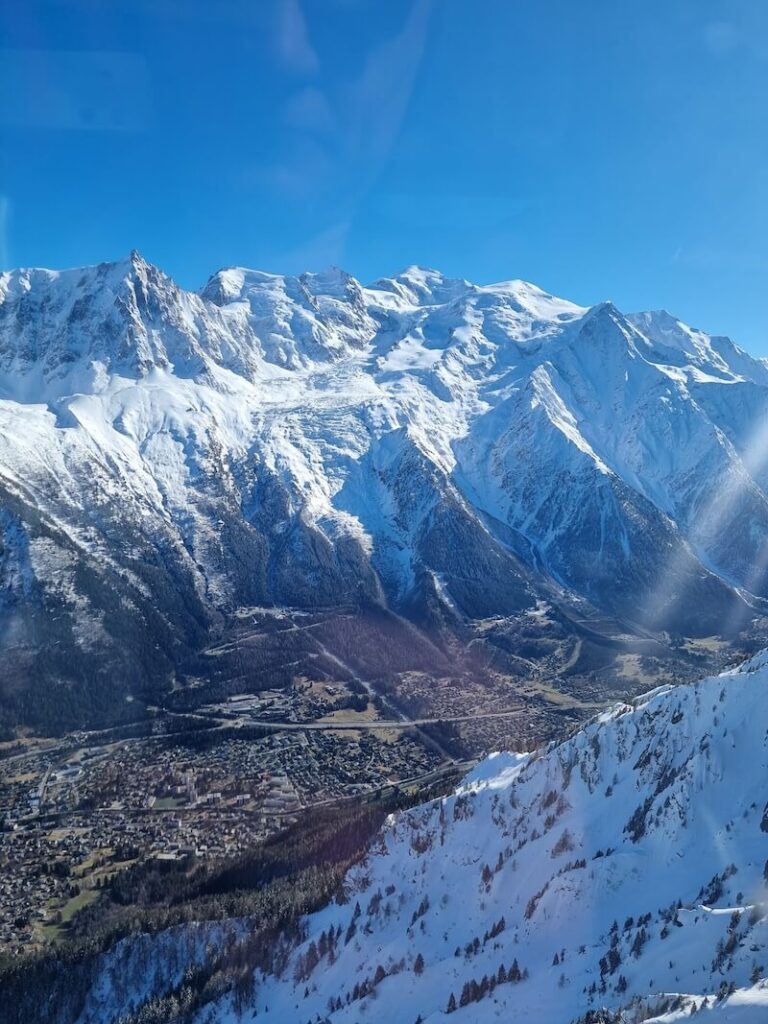
Is Chamonix good for learners or beginners?
My visit to Chamonix was actually to help teach a friend to snowboard, and we wanted somewhere with a short transfer time and good apres ski. Chamonix ticked the box here, and we thought the terrain looked suitable. And yes, there are some nice little areas to get to grips with the fine art of sliding down a mountain at speed.
But is Chamonix a good resort to learn to snowboard or ski?
In general, yes, it’s as good a place as any. There is a small green slope at Brevent, served by a t-bar. And a bigger and more varied area at Flegere, which is served by a chairlift, but also a really horrible dismount at the top (fast, steep, kinda scary for beginners and not really kid friendly).
The Flegere learner area has a nice little mini snowpark, with some little rails and boxes for people to practice.
Both areas then offer access to slightly trickier blue runs, with the option to progress to a red if you’re ready.
However, the negatives are that the learner areas are busy, the return chairlifts are congested (or were when we were there) and the terrain is limited. The benefit of Chamonix though is that you can switch to one of the other areas after a few days to keep it varied and interesting.
Les Houches is definitely the better option for learners, kids and general progression. But in general, if you’re looking for somewhere to learn, or to teach someone, I’d look elsewhere such as Megeve, Avoriaz/Morzine or Le Grand Massif.
Read our full article: Is Chamonix good for beginners?
Apres ski, dining and more…
One thing that must be said for Chamonix is that it’s a vibrant town with a lot going on. If you’re looking for apres ski, whatever that looks like for you, there is probably something that fits the bill.
On the mountain, you’ll find some lively bars playing big beats and serving beer and cocktails with amazing views. Prices are as steep as the descents too – I’d say more expensive than my recent forays into Switzerland.
That said, we enjoyed some lively apres in Le Praz, off the Flegere gondola at the Hotel Le Castel. They were playing funky tunes and serving up cold beers and cocktails, so we soaked up the vibes while waiting for the bus (and missing about 4 of them while we drank too much).
There is also a Folie Douce at the foot of the Brevent gondola, which any Euro ski veteran will know is one of the focal points for apres ski. This is, however, not quite as bumping as other Folie Douce’s you may have experienced, mostly because it’s also a hotel. However, if you’re looking for a fun place to enjoy some apres drinks with a view of the sun going down at the end of the valley, this could be a good option.
The town itself offers a wide variety of dining, from high end dining and Alpine cuisine, to pizza and kebab. We enjoyed a mix of culinary experiences, including the obligatory fondue and raclette restaurants, as well as some cheaper eats at burger joints, a really good kebab shack and a buzzing pizza bar.
We ate at Poco Loco Burger (not bad burger), Brasserie Le National (really good fondue, well priced, fun staff), Le Serac (great raclette experience, a little busy and with slightly stressed staff, but hey, it was obviously good), Paradisio Pizza (excellent and fast), and the kebab bar you’ll probably spot. Also excellent and fast.
There are also numerous pubs and bars scattered around, with some particularly British style venues staffed by lots of Brits and Australians.
Where to stay in Chamonix?
As we mentioned, the town of Chamonix sprawls along the valley, with multiple access points to the mountain ski resorts. However the entire Chamonix valley is well served by public transport, so chances are you won’t be far from a ski bus stop.
In the town itself, you’ll find numerous apartments, hotels and holiday rentals. Don’t hold out for ski in/ski out as you won’t find it.
We stayed at the budget Hotel du Lacs which was about 20 minutes walk from the town centre, or around 5 mins by bus. The bus stopped right opposite the hotel and the hotel itself was a nice, family run spot close to a wooded lake and with excellent views towards the Aiguille du Midi from our room.
Prices for apartments and hotels in Chamonix vary hugely of course. We spotted places (cheap studio apartments mostly) for around €120 per night, with prices going up to pretty much as high as you’d expect. A normal range per night seemed to be betwee €150 per night for budget digs, up to €300-400 per night for more mid-range luxury.
We booked through Booking.com, but you’ll also some reasonable options for apartments on sites like Vrbo.
If you’ve found this Chamonix ski resort review interesting, make sure to sign up for our newsletter (hit the link below). We regularly share deals, weather updates and other useful info for snow fans like you planning their winter experiences!
